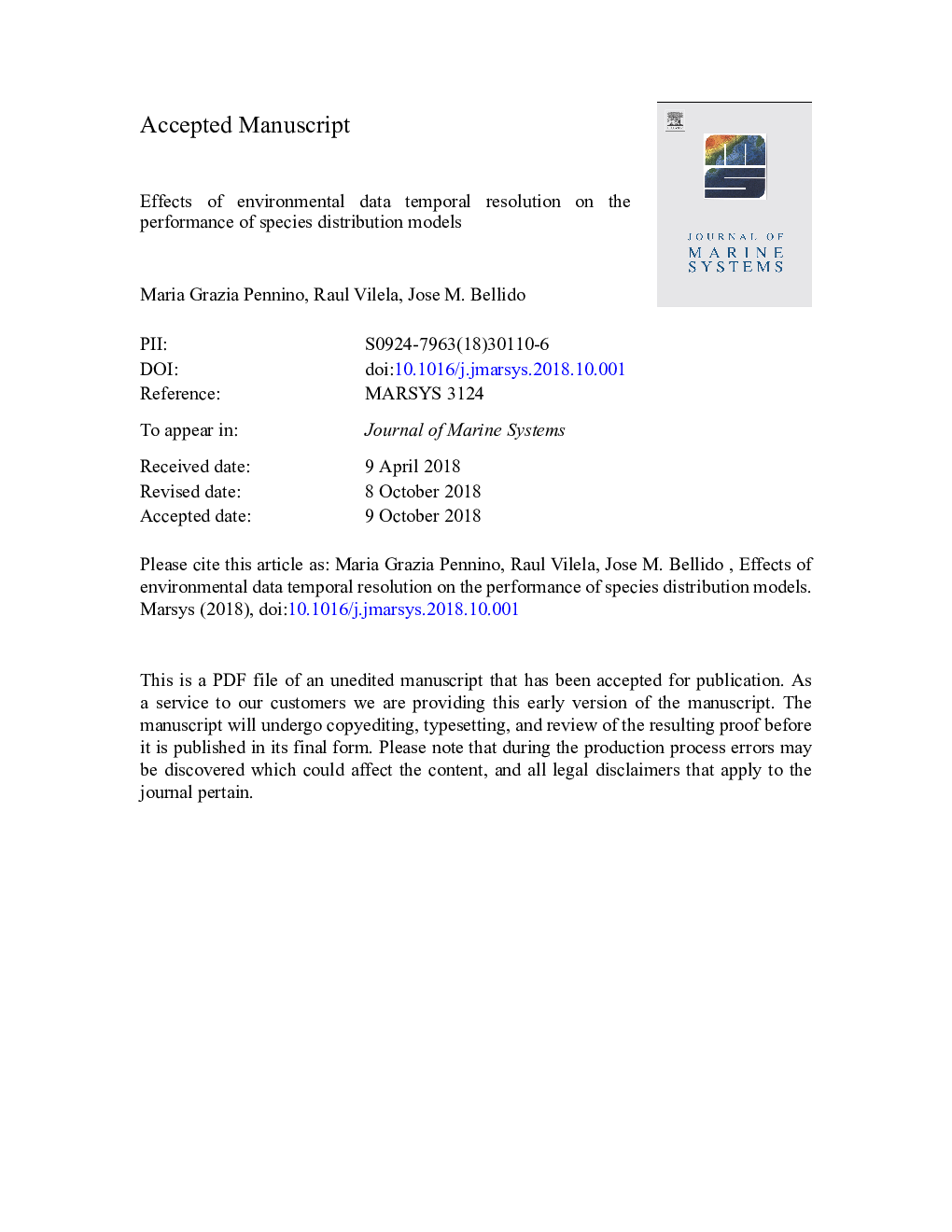| Article ID | Journal | Published Year | Pages | File Type |
|---|---|---|---|---|
| 11606667 | Journal of Marine Systems | 2019 | 30 Pages |
Abstract
Assessing how environmental changes affect the distribution and dynamics of animal populations is becoming increasingly important, enabling ecologists to better predict the effects of global warming, biodiversity reduction or habitat degradation. In this context, the use of remotely sensed and modeled environmental variables play a key role by providing spatially contiguous predictors for species distribution models. Nevertheless, little attention has been paid to how the temporal scale of the environmental predictors could affect predictions. Here, we investigate how different levels of temporal integration of environmental variables influence model performance. We present the case study of the distribution of the three most discarded species of the bottom trawl mixed-species fishery in the Cantabrian Sea from 2004 to 2008. We find clear improvements in model prediction performance when using environmental data aggregated by season, while the estimation of the relationship between species and their habitats is better represented by time-specific data. Our results also support the hypothesis that medium and lived species are more sensitive to seasonal environmental conditions, in contrast to results found for long-lived marine mammals and seabirds, indicating that their distributions are better predicted by long-term mean conditions.
Related Topics
Physical Sciences and Engineering
Earth and Planetary Sciences
Oceanography
Authors
Maria Grazia Pennino, Raul Vilela, Jose M. Bellido,
